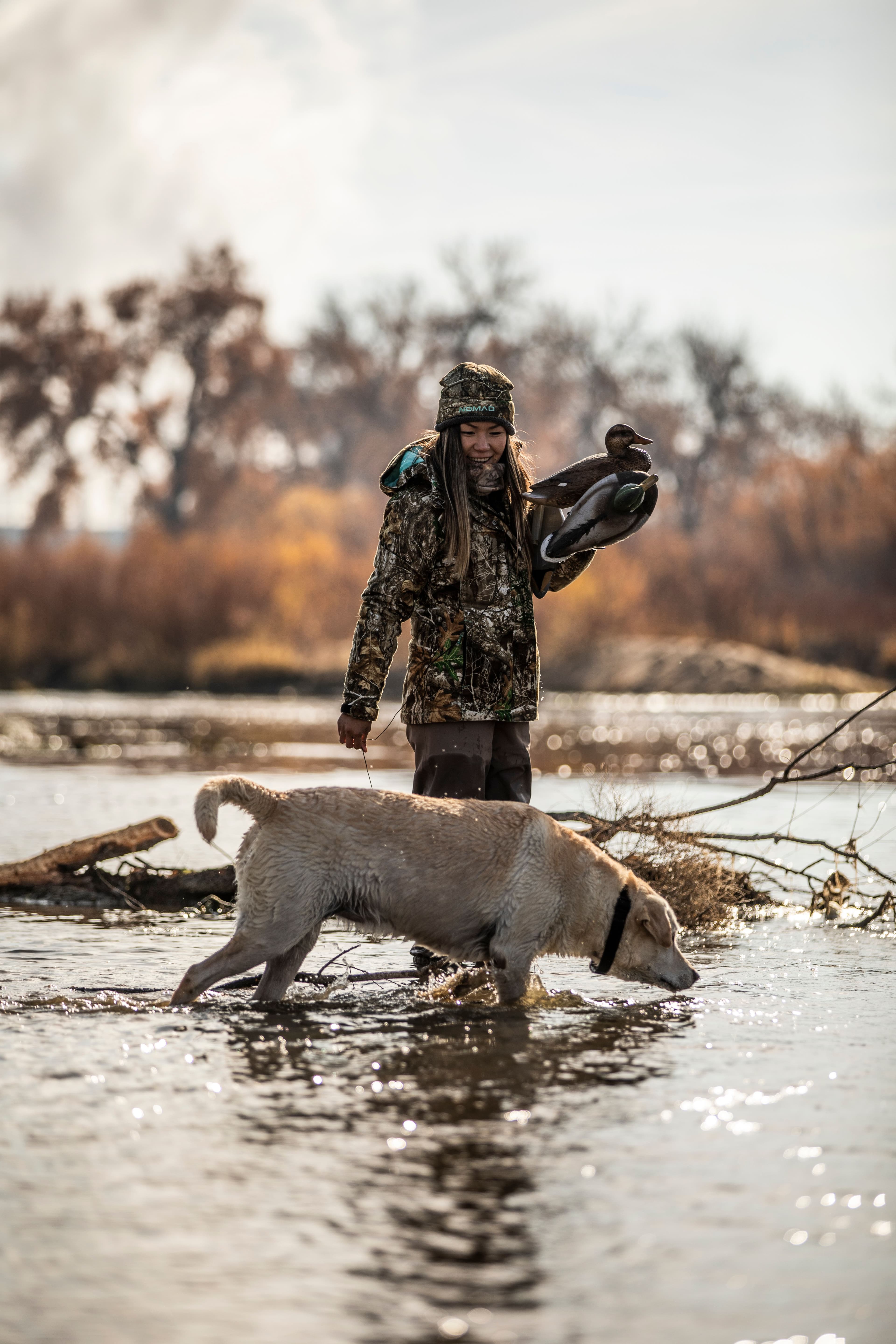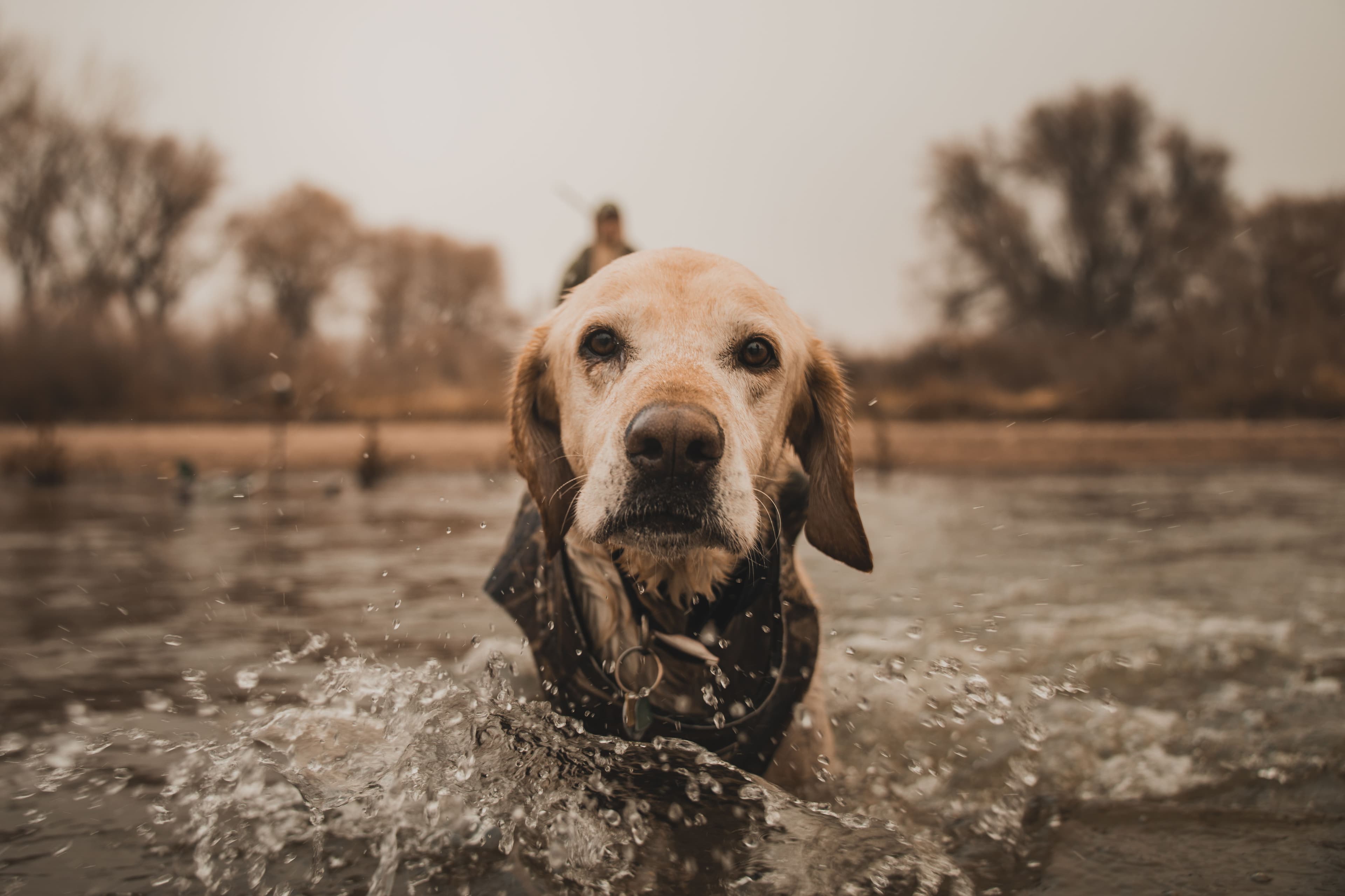Using The Infinite Outdoors App to Discover High-Quality Duck Hunting Near You


Justin Hunold
11/29/2024
Duck hunting is deeply tied to the rhythm of North America’s waterfowl migration. Each year, millions of ducks traverse the continent along ancient flyways, moving between breeding and wintering grounds. Hunters who understand these flyways—and the unique habitats and behaviors they represent—are better equipped to find consistent success. The Infinite Outdoors app simplifies this process, offering access to premium duck-hunting locations tailored to your region or travel plans.
Let’s dive deeper into the four North American flyways to explore their habitats, key water bodies, typical food sources, and regionally specific tactics to make your next duck hunt a success.
Booking a premier DIY hunting location traditionally involves navigating complex landowner relationships, deciphering property boundaries, and ensuring compliance with local regulations. The Infinite Outdoors app revolutionizes this process, offering a seamless platform connecting hunters with exclusive private lands nationwide. Here's an in-depth guide on how to utilize the app to secure top-tier hunting spots:

Using Infinite Outdoors for “Duck Hunting Near Me”
The Infinite Outdoors app is a game-changer for waterfowl hunters, especially those seeking private land access. Whether you’re targeting Atlantic marshes or Pacific rice fields, the app simplifies finding, booking, and hunting quality locations. By focusing on the unique characteristics of each flyway, you can customize your search to match your target species and preferred hunting style.
1. Download and Explore the App
- Access the Platform: Download the Infinite Outdoors app from the App Store or Google Play Store.
- User Registration: Create an account to unlock the app's full features, including property listings, mapping tools, and booking capabilities.
2. Navigate the Mapping Tools
- Property Search: Utilize the app's advanced mapping features to locate available hunting properties. You can filter searches based on location, game species, and specific amenities.
- Detailed Property Insights: Each listing provides comprehensive information, including property boundaries, habitat types, available game, and any specific regulations or requirements.
- Offline Access: Download maps for offline use, ensuring you have access to crucial information even in areas with limited connectivity.
For a visual guide on using the mapping tools, refer to this tutorial video.
3. Select and Book Your Adventure
- Review Listings: Examine property details, availability calendars, and any user reviews to ensure the location aligns with your hunting objectives.
- Reservation Process: Once you've chosen a property, follow the in-app prompts to book your adventure. Reservation fees are processed at the time of booking and are non-refundable. All outdoorsman fees will be processed automatically 48 hours before the hunt. Infinite Outdoors USA
- Confirmation: After booking, you'll receive confirmation details, including access instructions, property rules, and any information pertinent to your hunt.
For a step-by-step walkthrough on booking an adventure, watch this informative video.
4. Prepare for Your Hunt
- Licensing: Ensure you have the appropriate hunting licenses for the state and game species. The app may provide links to state licensing portals for your convenience.
- Gear Checklist: Refer to the comprehensive gear list provided earlier to ensure you're adequately equipped for your DIY hunting trip.
- Property Familiarization: Use the app's mapping tools to familiarize yourself with property boundaries, access points, and any designated hunting areas or blinds.
5. During and After the Hunt
- Access and Navigation: Utilize the app's GPS features to navigate to and within the property, ensuring you remain within permitted areas.
- Adherence to Rules: Respect all property-specific regulations and guidelines to maintain good standing with landowners and the hunting community.
- Feedback: After your hunt, consider leaving a review or feedback within the app to assist future hunters and provide valuable insights to landowners.
By leveraging the Infinite Outdoors app, hunters can efficiently discover and book premier DIY hunting locations, gaining access to exclusive private lands that enhance the overall hunting experience. This platform not only simplifies the booking process but also fosters responsible hunting practices and conservation efforts across the country.

The Four North American Waterfowl Flyways
Atlantic Flyway
Geography and Habitat
The Atlantic Flyway hugs the East Coast, stretching from eastern Canada to the Caribbean. Ducks in this flyway utilize a mix of freshwater marshes, tidal wetlands, estuaries, rivers, and coastal bays. Saltwater marshes and backwater inlets also serve as critical wintering grounds for many species.
- Major Bodies of Water: Chesapeake Bay, Hudson River, Pamlico Sound, Cape Cod Bay, and the St. Lawrence River.
- Typical Food Sources: Submerged aquatic vegetation (wild celery, widgeon grass), small fish, crustaceans, acorns, and agricultural grains like corn and soybeans.
Regional Tactics
- Decoying in Tidal Areas: Tidal waters require adaptable decoy setups that adjust with shifting water levels. A mix of dabblers (mallards, black ducks) and divers (buffleheads, scaup) works well.
- Wood Duck Ambush: Early mornings near secluded creeks or flooded timber are prime times for wood ducks.
- Coastal Hunting: Late-season tactics often focus on divers like buffleheads and scoters near open bays and salt marshes. Use long-line decoy rigs to mimic large rafts of birds.
Mississippi Flyway
Geography and Habitat
Known as the waterfowl superhighway, the Mississippi Flyway is defined by the Mississippi River and its surrounding wetlands. It’s characterized by vast river floodplains, backwater sloughs, flooded timber, and agricultural fields.
- Major Bodies of Water: Mississippi River, Great Lakes (Lake Michigan, Lake Erie), Arkansas’s Bayou Meto, and Reelfoot Lake in Tennessee.
- Typical Food Sources: Corn, rice, milo, acorns, aquatic vegetation, and invertebrates.
Regional Tactics
- Flooded Timber Hunting: In Arkansas and parts of Louisiana, hunters position themselves in flooded hardwood forests, where mallards funnel into the timber. Small, tight decoy spreads and subtle calling work best here.
- Field Hunting: In the Midwest, hunting over harvested corn and soybean fields with layout blinds and large decoy spreads is effective for mallards and pintails.
- Diver Duck Strategies: On larger lakes and rivers, such as Lake Michigan, long lines of decoys attract canvasbacks, scaup, and redheads.
Central Flyway
Geography and Habitat
The Central Flyway spans the Great Plains from the Canadian prairies to the Gulf Coast. Its habitats include shallow prairie potholes, playa lakes, reservoirs, and coastal marshes.
- Major Bodies of Water: Platte River, Cheyenne Bottoms in Kansas, Devils Lake in North Dakota, and the Texas Gulf Coast.
- Typical Food Sources: Waste grain (wheat, corn, rice), millet, smartweed, and invertebrates.
Regional Tactics
- Prairie Pothole Setup: Early in the season, small ponds and potholes are magnets for teal, shovelers, and pintails. Light decoy spreads and jerk rigs add realism.
- Reservoir Hunts: In regions like Oklahoma and Kansas, large reservoirs hold migrating and staging birds. Mixed spreads of dabblers and divers are effective, especially in open water.
- Coastal Hunting: On the Texas Gulf Coast, hunting redheads and pintails in saltwater marshes involves large spreads and flagging to attract distant birds.
Pacific Flyway
Geography and Habitat
The Pacific Flyway stretches from Alaska to Mexico along the western edge of North America. It encompasses diverse habitats, including mountain lakes, river valleys, wetlands, and expansive agricultural fields in California’s Central Valley.
- Major Bodies of Water: Klamath Basin, Columbia River, Salton Sea, San Francisco Bay, and California’s Central Valley wetlands.
- Typical Food Sources: Rice, barley, smartweed, bulrush, invertebrates, and small fish.
Regional Tactics
- Rice Field Hunts: In California, managed rice fields are critical for wintering birds. Large, realistic spreads of mallards and pintails work well here.
- River Hunting: The Columbia River attracts mallards, wigeons, and teal. Hunters often use boats or island blinds with small spreads.
- Mountain Wetlands: High-altitude wetlands in Oregon and Washington are prime spots for green-winged teal and northern shovelers. Lightweight decoy setups make transport easier.
Essential Gear for DIY Duck Hunters
Traveling for duck hunting, especially to new regions, demands careful preparation. Each flyway and habitat presents unique challenges, so having the right gear is essential to ensure success and comfort. Here’s a more detailed breakdown of what you’ll need for your DIY waterfowl adventure:
Clothing and Apparel
Waders:
- Insulated Waders: Perfect for colder climates or late-season hunts.
- Breathable Waders: Ideal for warm weather or early-season hunts to prevent overheating.
Outerwear:
- Camo Jacket: Waterproof and windproof with patterns suited to your flyway’s terrain, such as marsh, woodland, or open water.
- Camo Pants: Lightweight for early season or insulated for colder conditions.
- Rain Gear: Packable rain jacket and pants for sudden downpours.
Base Layers:
- Moisture-wicking thermal layers for regulating body temperature.
- Merino wool or synthetic blends for comfort and odor control.
Accessories:
- Gloves: Waterproof and insulated for handling decoys and shooting in wet conditions.
- Beanie/Balaclava: Essential for warmth and concealment.
- Socks: Wool or insulated socks to keep feet warm and dry in waders.
Hunting Equipment
Shotgun:
- Reliable 12-gauge or 20-gauge models suited to waterfowl hunting.
- Semi-automatic or pump-action shotguns are popular choices.
Ammunition:
- Non-Toxic Shells: Steel, bismuth, or tungsten loads. Common shot sizes include #2, #4, or #6, depending on the species and conditions.
- Carry extra shells in a waterproof container to avoid moisture damage.
Decoys:
- Dabbling Ducks: Mallards, teal, pintails, and wigeons for shallow water or field setups.
- Diving Ducks: Canvasbacks, scaup, or buffleheads for open water.
- Motion Decoys: Add realism with spinning-wing or jerk-rig systems.
Calls:
- Mallard Call: A versatile staple for most flyways.
- Specialty Calls: Pintail whistles, teal peeps, or diver duck calls for targeted species.
Blinds:
- Portable Ground Blinds: Easy to set up in fields or along shorelines.
- Layout Blinds: Ideal for open field hunting.
- Natural Cover: Materials like burlap or camo netting to enhance concealment.
Dog Gear (If Hunting with a Retriever)

Dog Vest: Provides insulation and protection in cold or wet conditions.
First Aid Kit: Include supplies for paw injuries or other emergencies.
Dog Leash and Stake-Out: This is for securing your retriever when it is not in use.
Bumper or Dummy: For training during downtime.
Accessories
Blind Bag:
- Essentials: Extra shells, choke tubes, snacks, water, and a multi-tool.
- Navigation: Compass, GPS device, or phone with downloaded maps.
Headlamp/Flashlight: Crucial for setting up in pre-dawn darkness.
Thermos and Snacks: Hot coffee or soup can be a morale booster during long hunts.
Cooler: For transporting harvested ducks home while keeping them fresh.
Duck Strap/Game Carrier: An easy way to carry your harvest out of the field.
Miscellaneous Items
Waterproof Storage Bags: Keep important gear like your phone, licenses, and maps dry.
Emergency Gear:
- First aid kit for hunters.
- Whistle or signal device for safety.
Navigation Tools: Even with apps like Infinite Outdoors, carry a backup map or GPS.
Boat Equipment: If hunting open water or rivers, ensure your boat is equipped with:
- Life jackets.
- Anchor.
- Oars or paddles.
Optional Technology
Bird Identification Apps: Help identify species and track migration reports.
Portable Weather Stations: Check wind direction and temperature for adjusting decoy setups.
Trail Cameras: Monitor waterfowl movement on frequently hunted properties.
This expanded gear list ensures you’re prepared for any situation, whether you’re stalking teal in the Central Flyway or waiting for canvasbacks in the Pacific. With the right tools and planning, your DIY duck-hunting trip will be as rewarding as the birds you bring home.
Conclusion
Duck hunting across North America’s flyways is as diverse as the landscapes themselves. By understanding the unique habitats, food sources, and hunting tactics of each flyway, you’ll gain the insight needed to succeed. Pair this knowledge with the Infinite Outdoors app, and finding quality duck hunting near you—whether close to home or across the country—becomes effortless.
Gear up, download the app, and head out to experience the wonder of waterfowl migration firsthand. It’s a journey that will deepen your appreciation for these incredible birds and the wild places they inhabit.